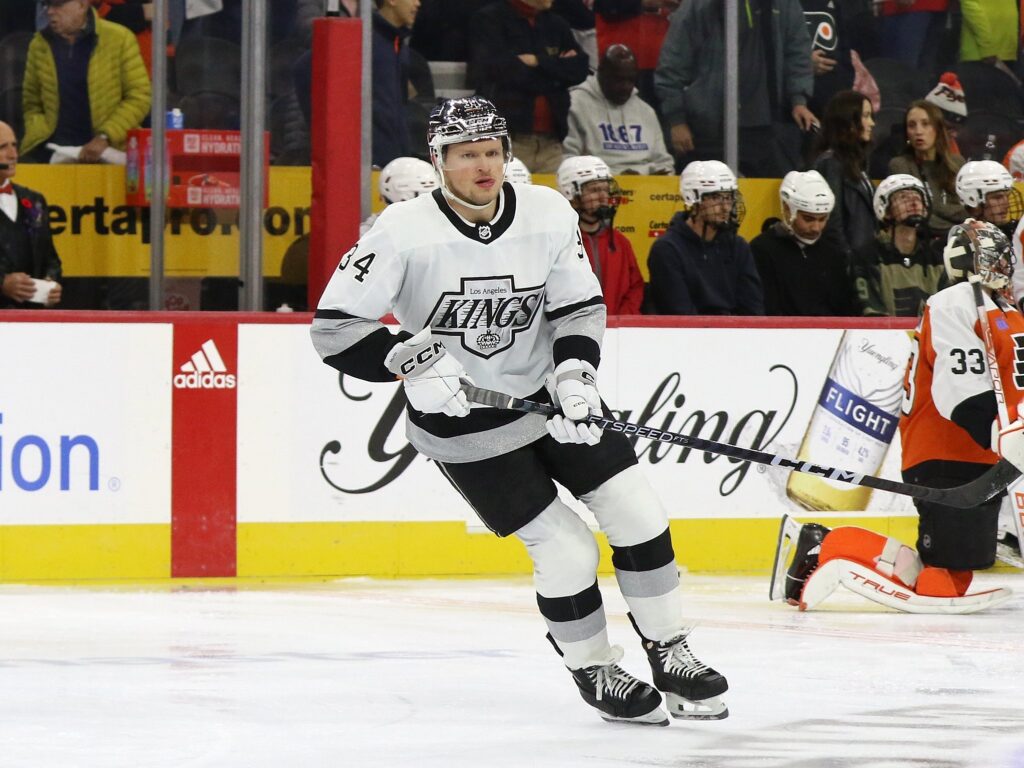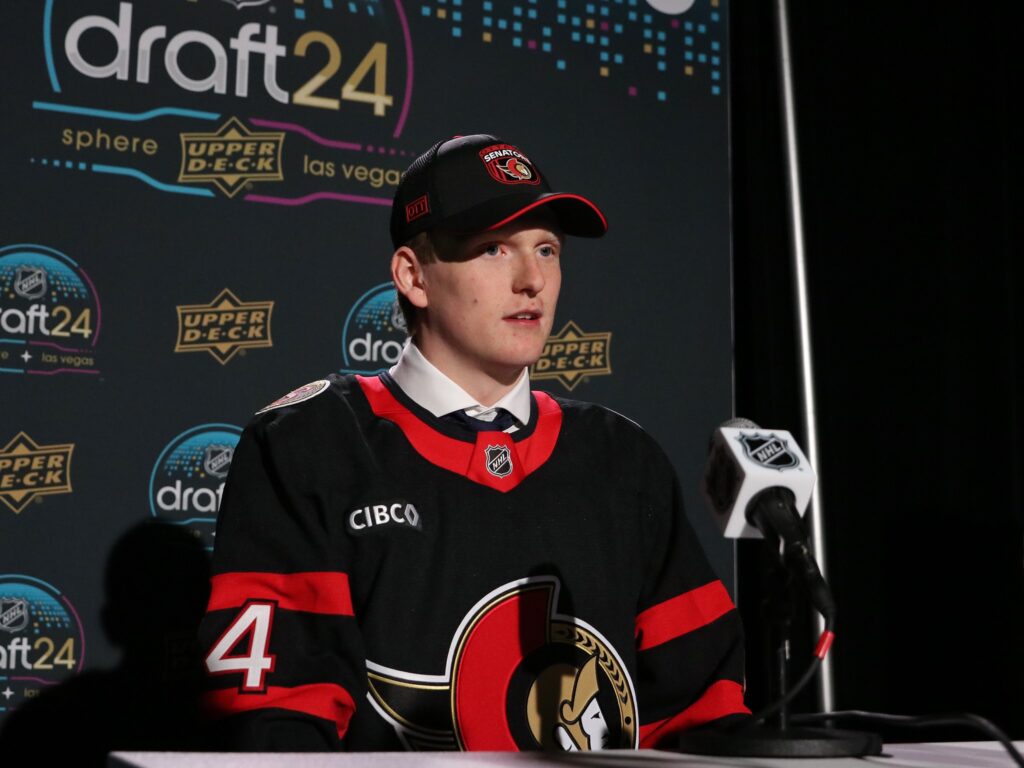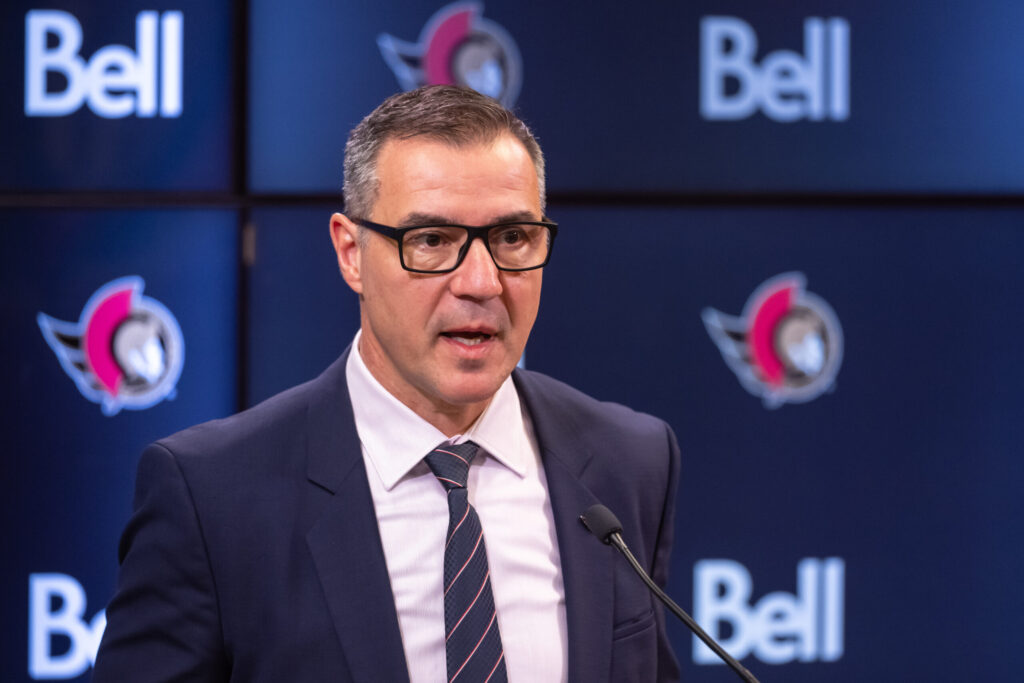As the NHL’s roster deadline passed on Monday, the usual flurry of transactions and waiver-wire drama consumed the hockey world. On the surface, the Ottawa Senators’ moves looked standard: a training camp roster of 31 trimmed to a compliant 22 healthy bodies, with two key players stashed on Injured Reserve. But a deeper look at the decisions made by management and head coach Travis Green reveals a clear, calculated strategy. This wasn’t just about trimming the fat; it was a deliberate deployment of assets designed to fortify the entire organization, from the Canadian Tire Centre down to the CAA Arena in Belleville.
Previously on the EDGE – Ottawa Senators Enter Training Camp with a Stanley Cup Mindset
The final cuts signal a franchise that is moving beyond simple hope and into the realm of strategic depth, asset management, and patient development. For fans, the key takeaway is this: the players sent down are just as important to the Senators’ future as the ones who stayed.
The Belleville Battalion Gets Bolstered
Perhaps the biggest winner in the Senators’ final roster decisions is their AHL affiliate, the Belleville Senators. While fans often view demotions as failures, the reality is that Ottawa has just injected its farm team with a formidable collection of talent that will be crucial for both development and NHL-level injury support.
Five players who cleared waivers—forwards Jan Jenik, Hayden Hodgson, and Arthur Kaliyev, defenseman Lassi Thomson, and goaltender Mads Sogaard—are now ticketed for significant roles in Belleville. They are joined by waivers-exempt forward Stephen Halliday. This group isn’t merely a collection of fringe players; it includes individuals who were legitimately pushing for NHL jobs. Kaliyev, in particular, was seen by many as having a strong camp. His presence, along with the others, ensures that the competitive fire stoked in Ottawa’s training camp now moves an hour and a half down the 401.

Furthermore, the towering 6-foot-7 goaltending prospect, Mads Sogaard, will get the undisputed starting minutes he needs to continue his development after battling through injuries. Having him clear waivers and land in Belleville is a massive win for the organization, allowing him to hone his craft without the pressure of being a backup in the NHL. This infusion of talent transforms Belleville from a simple development squad into a legitimate AHL contender and, more importantly, a repository of ready-and-waiting reinforcements.
The Yakemchuk Plan: Patience is a Virtue
The final cut is always the most scrutinized, and this year that distinction fell to Carter Yakemchuk, the club’s top prospect and 2024 first-round draft pick. While some may have clamored to see the exciting young defenceman break camp with the big club, the organization opted for the prudent, long-term approach.
Coach Travis Green made it clear the decision was about putting Yakemchuk in the best possible position to succeed, which, for now, means playing “big, important minutes” in the AHL. This isn’t a new philosophy in Ottawa. The Senators employed a similar developmental path with defenceman Tyler Kleven, allowing him to marinate in the minors, refine his professional game, and step into the NHL when he was truly ready.

The blueprint for Yakemchuk is clear: go to Belleville and become a dominant, all-situations defenceman. While his offensive instincts are NHL-ready, the consensus is that his defensive game requires refinement to handle the rigours of a full-time role against the best players in the world. Sending him to the AHL isn’t a slight; it’s an investment in his future as a cornerstone of the franchise’s blue line. He will learn to defend against seasoned professionals, run a power play, and kill penalties, all without the intense spotlight and sheltered minutes he would have received in Ottawa.
Roster Gymnastics and The “Good Problem”
At the NHL level, the Senators played their hand with savvy and foresight. Placing forward Drake Batherson and defenceman Tyler Kleven on Injured Reserve was a shrewd piece of roster management. With both players reportedly dealing with minor lower-body injuries and expected back soon, the move created the temporary flexibility needed to keep extra bodies in Ottawa through the opening days of the season.
This maneuver allowed the team to retain Olle Lycksell as the 13th forward and Donovan Sebrango as the 7th defenceman. Lycksell, who also cleared waivers, now offers Green a versatile option who can slot into the lineup when a heavier presence like Kurtis MacDermid isn’t required. Thanks to clearing waivers, Lycksell is exempt from the process for the next 30 days or 10 NHL games, giving the team maximum flexibility. Sebrango provides immediate cover on the back end while Kleven heals. Once the roster is fully healthy, the logical plan is for both players to head to Belleville, further strengthening the AHL club without risk.
This situation highlights what is becoming a theme in Ottawa: the emergence of “good problems.” The organization now has a surplus of quality right-shot defencemen, creating a healthy logjam that forces players like Yakemchuk to earn their spot rather than having it handed to them. This internal competition is the lifeblood of successful teams. Management’s goal of bringing in enough depth to cover injuries at every position is clearly bearing fruit. The final 22-man healthy roster (13 forwards, 7 defensemen, 2 goalies) is solid, but the true strength lies in the dozen players in Belleville who are chomping at the bit for their opportunity.
The era of plugging holes with waiver claims and hoping for the best appears to be over. The 2025-26 Ottawa Senators have constructed a deep, multi-layered organization where the line between the NHL and AHL is blurred by a constant flow of legitimate talent. The final cuts weren’t about closing doors; they were about opening new pathways for development and ensuring the franchise is built not just for a successful season, but for sustained contention.
Created with the aid of Gemini AI
